Table of Contents
Many riders often undervalue or ignore the importance of wheel type and size due to a lack of awareness of how pivotal they are in determining overall scooter performance.
When shopping for e-scooters, riders tend to prioritise top speed, price and range.
But while often overlooked, wheels are one of the most essential components of an e-scooter and play a critical role in determining ride quality, performance and safety.
You’re just about to buy your first electric scooter and are excited to get started.
But you’re not sure what size wheel is best for you. Do you go with a 10 inch or 12 inch? What about 8 inches? What is the best wheel size for an electric scooter? That’s a great question.
When choosing the right wheel, there are many factors to consider, such as terrain type, speed, manoeuvrability, power of the motor, and rider weight.
Electric scooter wheel sizes range from 6″ to 16″ inches. With such a wide range of tyres to choose from, it can be pretty daunting to choose one that fits your exact needs. So how do you know what size wheel is best for your needs?
In this comprehensive guide, you’ll learn the ins and outs of electric scooter tyres, including types, wheel size and why it’s essential, and more. Let’s get started by looking at the importance of electric scooter tyres.
The Importance of Electric Scooter Tyres
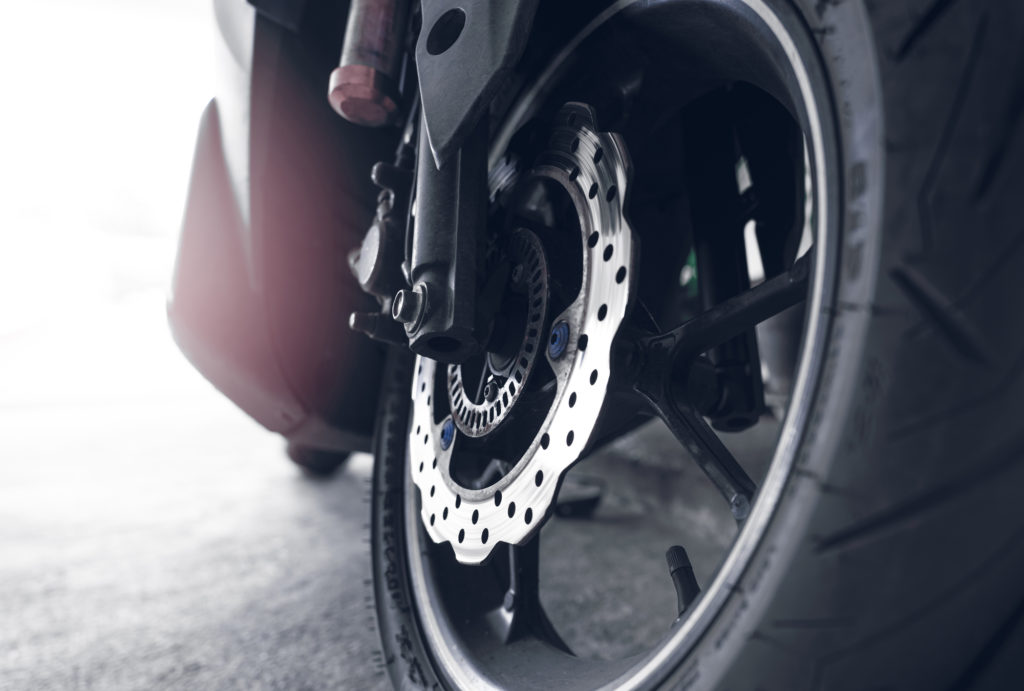
At its basic level, electric scooter tires connect an electric scooter with the ground and provide traction for propulsion.
The tyres have additional functions.
E-scooter tyres primary functions of e-scooter tyres include supporting the scooters weight and load, transmitting traction to the entire scooter, absorbing road shocks, transmitting braking forces, and aiding in the scooter’s navigation by maintaining the scooters navigation the scooters direction of travel as directed by the steering.
To achieve their primary functions, the tyres are constructed with tough rubber and filled with compressed air.
The inner tube is filled with air and functions to maintain correct air pressure.
However, the inner tube alone is not resilient enough to support the scooter’s weight, plus it’s not designed to withstand shocks and damages. A solid outer covering is necessary to support the scooters load and protect the inner, pressure-inflated tube.
The outer carcass is fortified with a thick rubber layer to withstand exterior wear and damage, plus transmit traction, braking, and torque to the road surface.
To understand the importance of wheels, your e-scooter basically cannot move from point A to B without tyres.
Electric scooter tyres are also essential as they are responsible for various aspects of the scooter, including how fast the scooter can travel, how many miles you can travel on a single charge, how well the scooter can handle corners, braking performance, and acceleration rate.
Every aspect of an electric scooter is dependent on the wheels.
The wheels also ensure that your scooter is safe for riding. In the same way, you want to wear shoes that fit nicely to your feet, you would want to use the correct size and type of tyres and in the proper condition to ensure optimum functioning.
Riding on tyres that are worn out, with the wrong tyre pressure, or incorrect sizes can have severe implications on the ride quality, scooter performance and, worse off, can jeopardise the scooters safety.
Types of Tyres
There are two primary types of electric scooter tyres: pneumatic (air-filled) and solid (non-pneumatic/ airless) tyres.
Pneumatics can either be tubeless or inner tube tires. On the other hand, solid tyres are categorised into either rubber-filled tyres or honeycomb tires with air pockets. Each of these tyres has its strong points and weaknesses.
Overall, pneumatic tyres are more efficient, offer better cushioning and traction compared to their solid counterparts. However, they are more susceptible to punctures and require great attention and maintenance for optimum functioning.
Solid tyres, on the other hand, require zero maintenance as they don’t get flats.
However, this doesn’t mean that solid tyres are more durable than pneumatic ones- both tyres wear out over time based on the riding intensity, terrain, maintenance, and other factors.
Wheel Size and Why It’s Important
The wheel size is essential, affecting several aspects of the ride such as stability, handling & control and overall performance of the e-scooter.
Electric scooter wheels come in several sizes. The standard range is from tiny 6″ diameter wheels to massive 13’’+ diameter wheels. 8.5″ is considered the optimum e-scooter wheel size, therefore pretty common.
How to Read the Tyre Size of an Electric Scooter
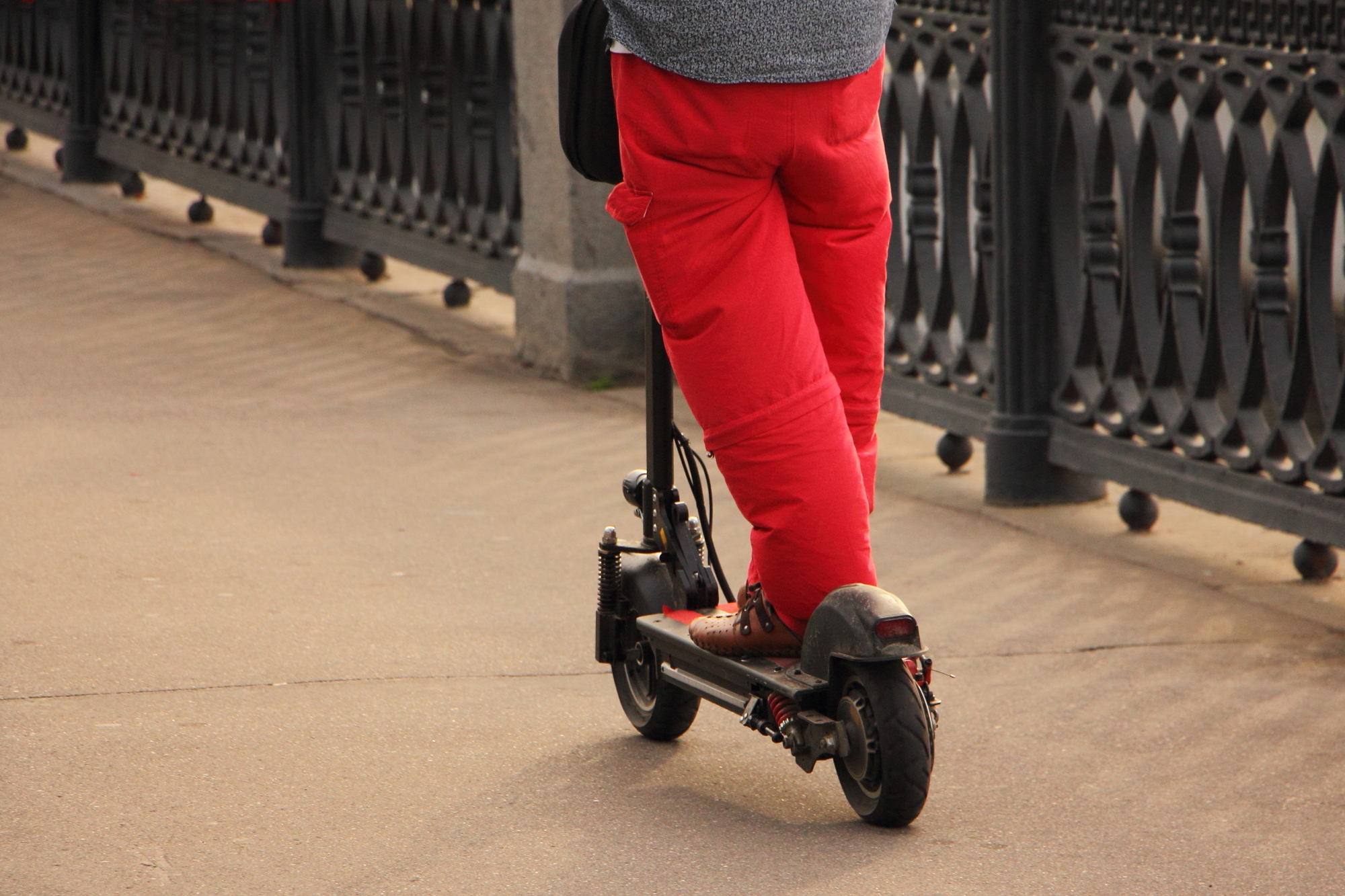
What exactly do we mean by wheel size?
Wheel size is stated in terms of wheel diameter and width.
The wheels diameter is the distance between either side of a rotating wheel, measured in an axis perpendicular to the plane of rotation. This usually means it is measured from one side of the rim to the other.
On the other hand, a wheel’s width is a unit of measurement that tells us how wide the tyre on your car or bike actually is. A wheels width is the distance between the inner rim to the flanges.
There are three different methods of indicating tyre sizes.
Reading the tyre size of an electric scooter is pretty straightforward.
The tyre sizing is usually imprinted on the side of the tyre, indicating the primary measurements, i.e., diameter, width and rim size. Secondary information will be the tyre type- for pneumatic tyres, the manufacturer suggests whether it’s tubed or tubeless, recommended PSI and max load capacity.
There are three different methods of indicating tyre sizes: one method uses an X between two numbers (and is the most commonly used), the other style uses a forward slash or X and a dash between the second and third number, and the other style uses a dash between two numbers (rarely used).
Below are examples of the three methods:
Method 1
10 x 3.0
Where:
10-Outer tyre diameter
3.0- Tyre width
Method 2
10 X2.50-6.50 or 10/2.50-6.50
Where:
10- Outer tyre diameter
2.50- Tyre width
6.50- Rim diameter
Method 3
10-2.50
Where:
10- Outer tyre diameter
2.50- Width /Thickness
What are the benefits and drawbacks to each wheel size?

Large Vs. Small Wheels
Wheel size is an extremely important factor to consider when choosing an electric scooter.
Each e-scooter has a different sized wheel, and each of these wheels will provide you with a different riding experience. For some people, it is all about the portability and convenience that comes with smaller sized wheels. Others would rather have the comfort and stability at high speeds that come with larger tyres.
The debate on large wheels versus small wheels in electric scooters has been going on for years.
Large wheels are generally better for off-road terrains, and smaller ones are easier to manoeuvre through tight spaces.
But which one is the best?
Is it just a personal preference, or do you need to choose your wheels based on where you live and your riding style? Let’s look at small wheels and large wheels by definition.
Wheel size is an extremely important factor to consider when choosing an electric scooter.
Large Wheels
All scooter riders don’t need to use larger wheels, but they offer unique benefits.
They are commonly found in mid-range, higher-end models and extreme performance scooters like Dualtron X2 (13″), Wolf Warrior 11(11″), and Turboant Pro (10″). Larger tyres range from 8″ inches to 13″ +, with most adult scooters averaging at around 8″- 9″.
Larger wheels carry more momentum, roll smoother, and offer greater ground clearance, suitable for a more aggressive type of riding. These qualities make them ideally suited for intermediate & advanced riders.
Small Wheels
Some scooters, especially kids e-scooters and most kick scooters, have small wheels with a diameter of below 8 inches.
Entry-level electric scooters such as the Segway Ninebot ZING, GoTrax GKS and the Razor E100 have small wheels too.
Incorporating this wheel size in entry-level electric or non-electric models is because it offers better manoeuvrability at a slow speed. Small wheels also provide a small deck clearance, inspiring confidence for new riders just starting their two-wheeled journey.
A Comparison Feature on Large Wheels vs Small Wheels Across Different Spectrums
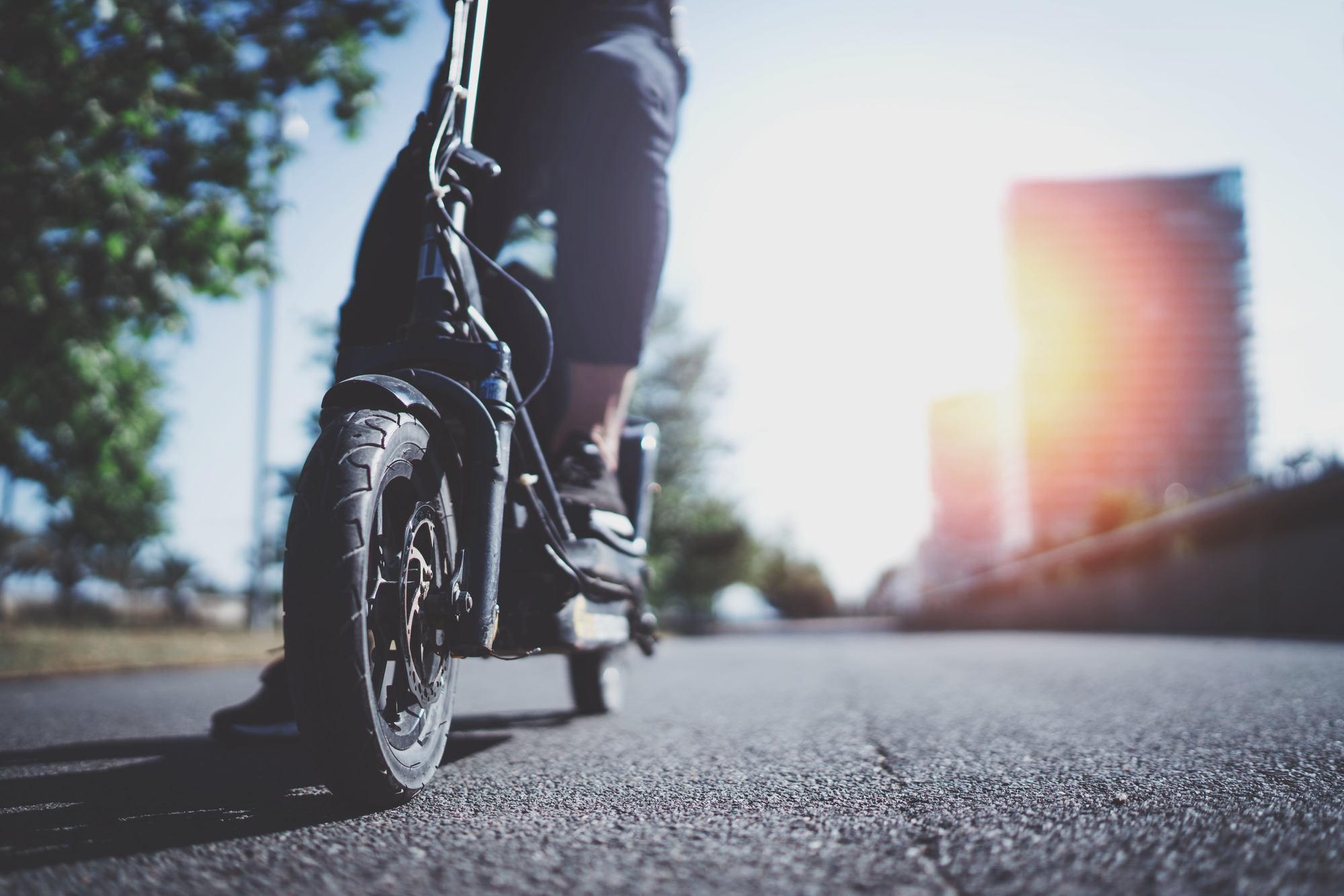
Manoeuvring Obstacles
Larger wheels can seamlessly roll over road obstacles due to a large angle of attack, resultantly facilitating a much smoother and more comfortable ride. Additionally, they offer good clearance, which prevents the scraping of the underdeck.
This also means that the scooter can tackle most types of terrain. Small wheels have a slight angle of attack and offer less clearance, inhibiting their ability to tackle bumpy or rough terrains. Electric scooters with small wheels are also less comfortable to ride since smaller wheels tend to dip into potholes and have more intense jumps over bumps, ruining the ride comfort.
Ideal terrains for large tyres :
Paved roads, rolling terrain, bumpy terrains, concrete roads, murram terrains and asphalts roads
Ideal terrains for Small tyres:
Paved roads, asphalt roads, concrete roads and generally typical urban terrains.
Gliding, Speed and Acceleration
Larger wheels are slower to accelerate due to the greater mass, resulting in less efficient acceleration than smaller wheels.
Scooters with smaller tyres accelerate much faster since smaller wheel frames increase the downward force, allowing for quicker acceleration. However, at peak speed, larger tyres provide better capability in storing inertia and maintaining momentum.
As such, electric scooters with larger wheels maintain a constant speed even when the throttle is released (gliding) much better than those with smaller wheels.
Smaller-wheeled scooters are not great at coasting as they don’t easily roll or maintain speed like large wheels, thanks to the low amount of inertia stored within the wheel.
Handling and Control
Large tyres come with their fair share of downsides. For instance, they significantly reduce manoeuvrability, especially at slow speeds. A longer wheelbase increases the scooter’s turning circle, reducing the overall manoeuvrability, especially in tight turns.
However, they are stable when moving at high speeds and in a straight line.
The significant benefits of e-scooters with small wheels are that they can quickly manoeuvre through traffic and better negotiate tight turns at slow speeds. Scooters with small wheels are also more responsive to steering than their larger counterparts.
Portability
Large wheels automatically increase the scooter dimensions (folded and unfolded), which affects portability.
Larger wheels are also heavier. Small wheeled scooters tend to be more compact and weigh less, which is excellent for portability- another reason why they are ideal for kids scooters.
Accompanying Scooter Parts
Larger wheels call for more significant accompanying parts like the deck and motor.
These associated parts need to be larger to accommodate the tyre size, and the same goes for smaller wheeled scooters. This automatically means that larger-wheeled scooters will offer better ride quality for adult riders and deliver better performance.
Rider’s Weight
Scooters with larger wheels can carry relatively heavier riders as compared to smaller-wheeled scooters.
Price
While many factors like quality and brand cumulatively determine the price of tyres, it’s no surprise that larger tyres are more expensive as they require more material during production.
Wide Vs. Slim Tyres
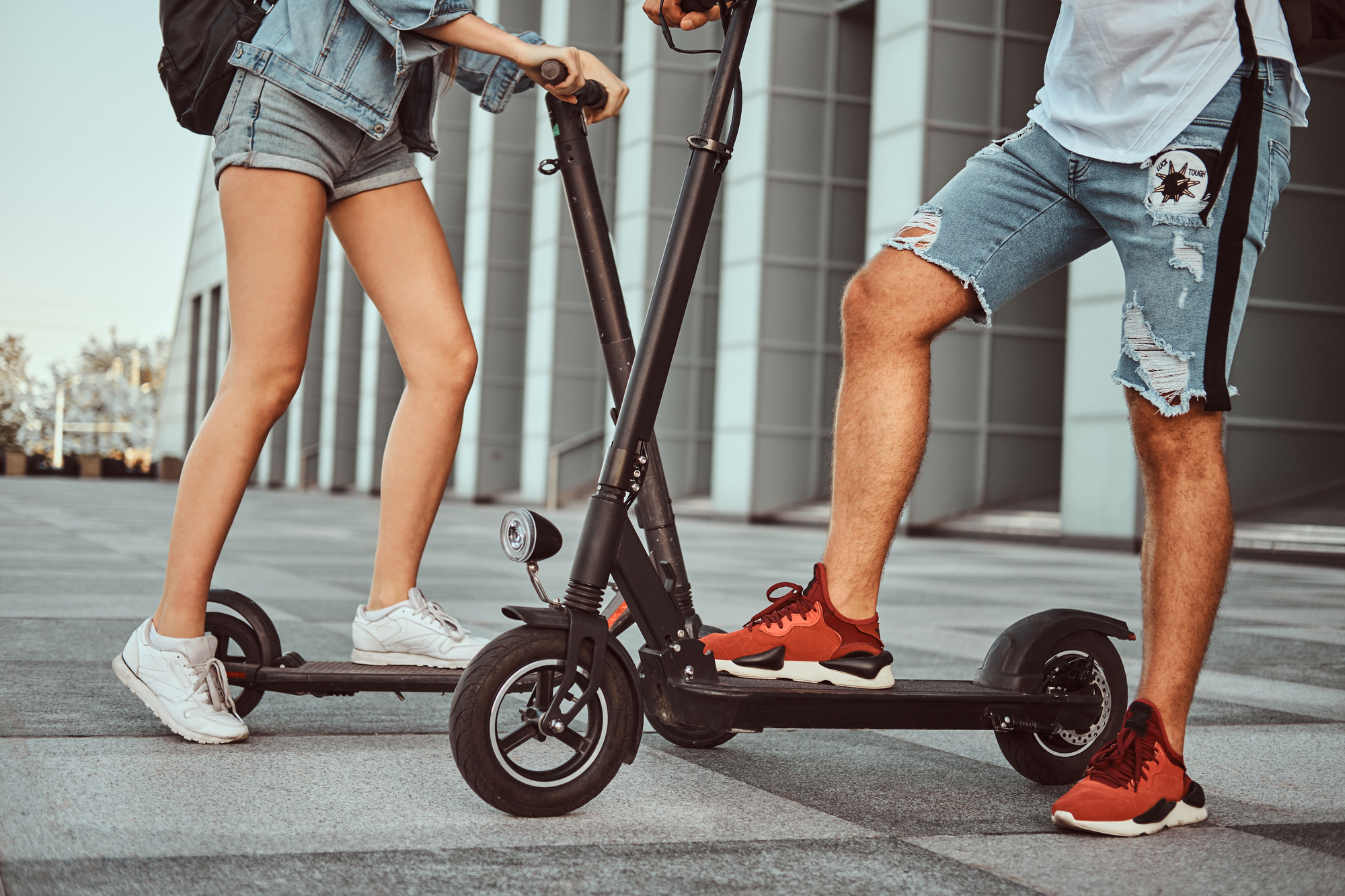
Traction and Cornering Performance
A wider tyre will have more grip under acceleration and braking, which means less chance of sliding out from underneath you when you’re pushing your scooter to its limits around a track.
On top of that, it will give you better stability through corners, which means that you can carry more speed and have an easier time correcting your scooter if you do make a mistake. Generally, wider tyres provide a better slip angle which allows for greater cornering forces. Wider tyres also offer better traction in wet conditions.
Range
Wider tyres affect range since they have a larger contact patch, which means that each revolution carries a bigger load.
This also means that as tyre width increases, there is increased rolling resistance. Resultantly, wider tyres require more energy to rotate; thus, they sap extra energy from your battery to facilitate motion. This decreases the range as compared to a scooter with slimmer tyres.
Handling and Performance
Scooters with a wider front wheel require more physical force to steer than scooters with slimmer tyres.
Due to the wider contact patch between the tire and the ground, there is added resistance, which requires greater physical exertion from the rider.
This makes riding for extended periods difficult. On the other hand, narrow tyres offer better turning due to decreased resistance. Additionally, due to the added tyre weight on wider wheels, you will notice a dip in the acceleration pick-up.
Appearance
Though looks can be deceiving, some riders prefer wider tyres over slimmer ones because of the overall aesthetic.
People tend to associate bigger tyre profiles with more aggressive, sportier designs, and if you want to make a statement with your scooter, wide tyres provide this look.
Weight
Wider wheels are bulkier than slim wheels, which adds to the overall weight of the scooter.
Price
The wider the tyre, the more material it requires during manufacture. Under this principle, we can conclude that wider tyres cost more than their slim counterparts.
Lifespan
Due to their higher load capacity, friction and surface area, wide tyres experience greater wear and tear, reducing their lifespan.
Can I change the wheel size on my scooter?
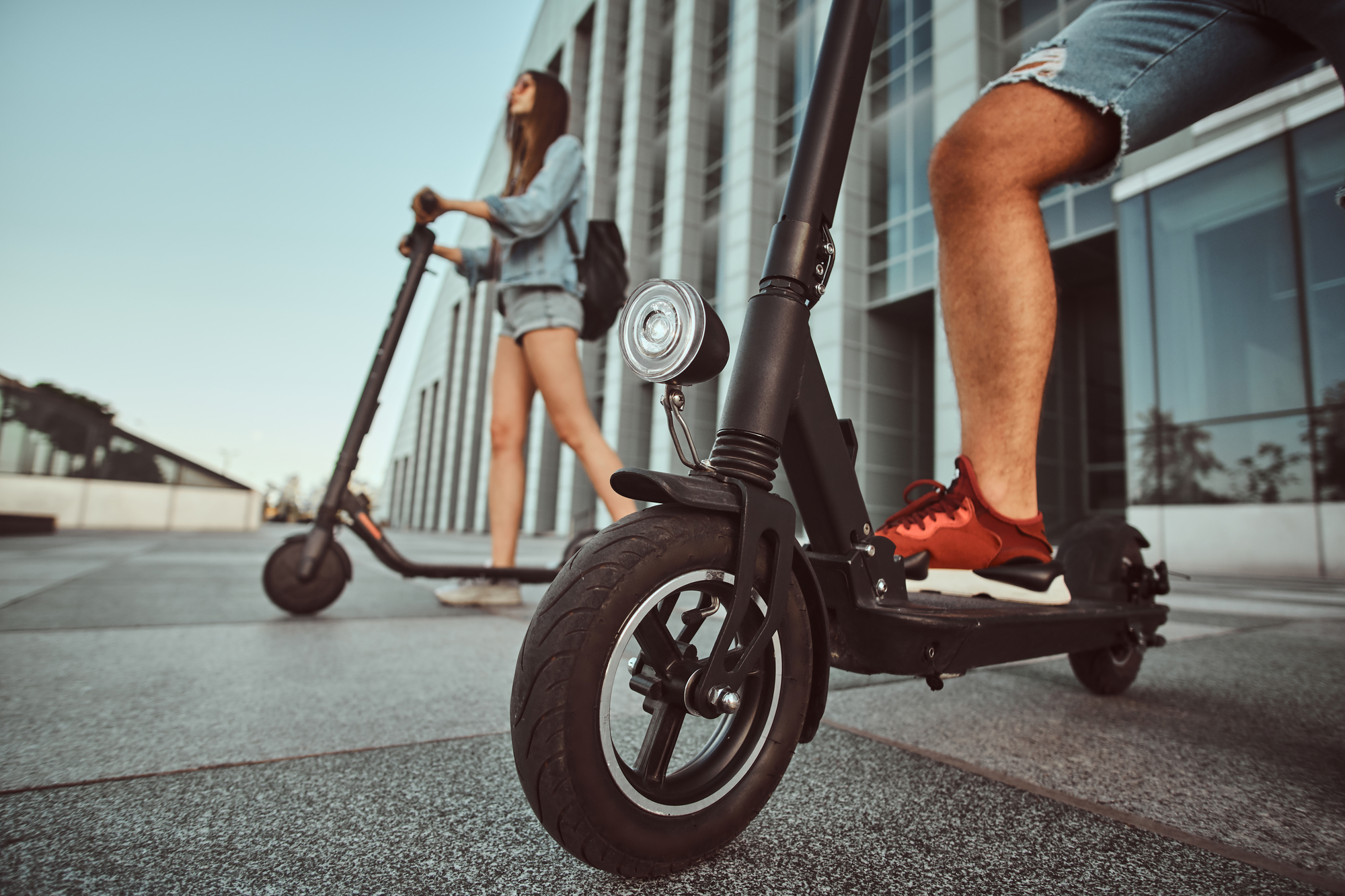
Yes, you can change the wheel size.
However, it is highly discouraged by scooter manufacturers as it comes with a whole host of complications. Most manufacturers set the scooter frame and motor configuration as OEM (original equipment) for particular tyre size.
But, most buyers will ignore this and simply buy any tyres that would fit without even knowing what it will do to their ride.
To perfectly accommodate the new wheel, riders will have to replace certain parts, including the axle, bearings etc.
Again, the chances are that the new wheel will not perfectly fit on the forks and arms of the scooter, which will lead to interference with the sides and other parts like the fender. What’s worse, this change affects handling and crucial elements such as suspension and braking.
Therefore, it is strongly advised to stick to the tyre size recommended by the manufacturer.
Are bigger wheels better on a scooter?
It depends on what a rider wants from their scooter, but big wheels confer more advantages.
Bigger tyres on an electric scooter will increase the maximum load capacity, while smaller ones will grant users a more lightweight and compact electric scooter experience.
Other advantages of bigger wheels include being matched with larger decks for comfort, having better shock absorption, and the chances of rolling safely over objects on the ground are higher.
In conclusion, bigger wheels are good for comfort and performance but reduce the scooter’s portability convenience.
Why do scooters have small wheels?
Small wheels are more nimble and agile with a reduced turning radius, it is easier to slow down and speed up, and notably, small wheels lower the overall weight. Small wheels work best in portability and convenience.
What is the best scooter wheel size?
The answer to this question is “it depends”. It depends on your weight, riding style, the use of the scooter and other factors.
In addition, there are different types of riders who may have varying opinions on this topic. Your personal preference should come into play as well.
However, mid-range to high-end performance scooters should ideally average at 8.5’’+ in diameter and a width of 2″- 4″ for optimal performance.
For entry-level, budget commuter and kids e-scooters, the wheels are typically 8″ and below in diameter.
Does a change in wheel size affect speedometer readings?
Yes, it will. However, the change will be close to negligent since the changes in tyre diameter will be so small that their effect on speed is not overly significant.
If you install a taller/ larger-diameter tyre, your speedometer may read slower than the actual speed. This is because the original equipment tires have smaller circumference and will travel less distance per revolution than larger ones. The vice versa is true when downsizing.
Can a scooter have different wheel sizes on the rear and front?
Yes, it is possible. However, it is not the standard in the e-scooter market and will be more common in bikes and motorcycles.
In such a case, the rear tyre is always smaller and wider, while the front remains larger and narrower.
This arrangement works because having a larger front motorcycle/ bicycle wheel will better the braking force, improve rolling over obstacles, and improve steering and handling at high speeds. On the other hand, the smaller rear tyres allow for faster acceleration, better stability, and increased torque.
The current common trend on e-scooters is a solid-pneumatic tire pairing, balancing reduced tyre maintenance and riding comfort.
Notably, making a two-wheeler with different wheel sizes on the front and rear (besides motorcycle and bicycle tyres) is not recommended. However, it is okay to do so if you know what you are doing.
Final Thoughts
What size wheel should you get?
The best way to decide is by considering the terrain, weight, budget, and riding style.
A fast rider would want a larger wheel for increased stability, while someone who wants an electric scooter that will be used on flat surfaces at slower speeds would want smaller wheels in order to make it more manoeuvrable.
Larger wheels are also better for rougher terrain. They allow you to drive more easily over small bumps and curbs, which can be a problem with smaller tires that don’t have the same amount of give when they hit an obstacle.
Ultimately, it is easier to balance on large wheels than on smaller ones. Remember that the right size of the tyre is a critical ingredient in maintaining control over your ride!
So, if you’re looking for a new ride, ensure that wheel size is top of your considerations.

